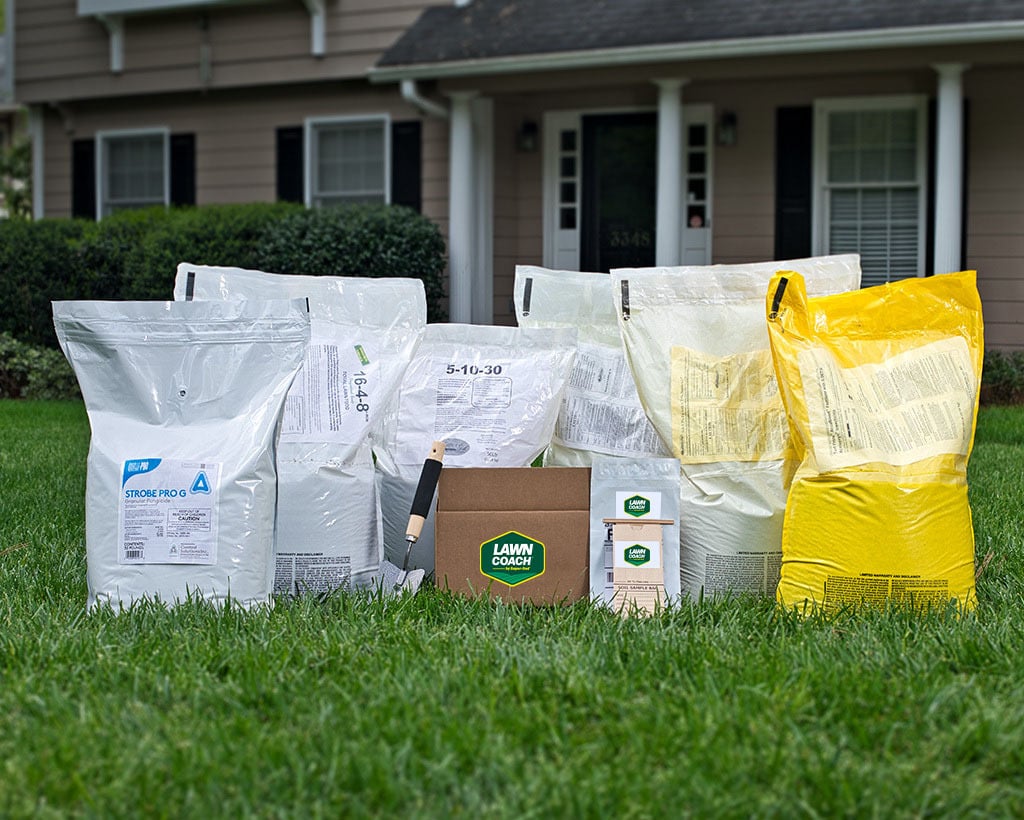

You’ve attentively laid your Tifway rolls and watered to establish your lawn. Follow these instructions to ensure the health of your Tifway Bermuda lawn.
Bookmark this Tifway 419 Bermuda lawn care page, then subscribe to our Monthly Lawn Tips so we can email you lawn care tips and alerts.
Mowing Tifway Bermuda Sod
- Mow at 1.5 inch cutting height.
- Mow no more than 1/3 of the leaf off at one mowing. Use sharp mower blades and catch and remove clippings. Can be mowed with either reel or rotary mower.
- Mowing may be required on a 3-to-6-day interval.
| Mow when grass is this tall: | 0.75 to 2.5 inches (5cm) |
| Set cutting height of mower to: | 0.5 to 2 inches (3.7cm) |
Watering Tifway Bermuda
Water to supplement rainfall shortages only. Avoid fixed timer irrigation settings.
Though drought tolerant, Bermuda best performs when it receives approximately 1 inch of water per week. If one or more inches of rainfall occur in a week, additional irrigation is not necessary. (Example: if 1/2 inch of rain occurs within a growing week, apply 1/2 inch by irrigation.)
Do not waste water by over watering; avoid run-off and standing water for any period of time. To learn more here's insight on How and When to Water Your Lawn.
Become a master at watering your lawn when you read all our Watering Guides.
Fertilizing Tifway Bermuda
- Apply between 2 and 4 pounds of nitrogen per 1000 square feet annually, during the growing season. Select a fertilizer that is labeled for use on Bermudagrass lawns. Do not apply fertilizer to wet turf to avoid burning. Too much fertility will result in a thatchy and unhealthy lawn.
- Fertilize according to the schedule below, based on feedback from soil test recommendations.
- Special note: Don’t fertilize your Tifway Bermuda lawn with high nitrogen fertilizer in fall or winter.
- Read about How to Calculate Fertilizer Rates.
- Lime can safely be applied any time of year. Lime based on feedback from soil test recommendations.
Weed Control in Tifway Bermuda
- Bermuda's vigorous growth can retard weed infestation, however the best weed control is preventive:
- Regular mowing
- Pre-emergent herbicide, recommended for use on Bermuda lawns on the label, is strongly recommended in the spring and fall
- Apply pre-emergent and post-emergent weed control products that are specifically labeled for Bermuda lawns. Do not apply pre-emergents 4 months prior to laying new sod.
- Apply pre-emergent weed control according to the table below. Read and follow all label directions.
- Apply post-emergent weed control to weeds you can see, as needed.
- For assistance with weed identification and pest control contact your nursery/garden center, landscaper, local Cooperative Extension Service agent, or browse our Weed of the Month section.
Look up Super-Sod's yellow spreader settings here.
Month |
Fertilizer & Weed Control (lbs/1000 sq.ft.) |
Timing |
| FEB | 0-0-7* + Iron w/ pre-emergent @ 6 lbs. | first week |
| APRIL | 16-4-8 + Iron w/ pre-emergent @ 6 lbs. | after last frost |
| MAY | 5-10-30 + Iron at 5 lbs. | middle of month |
| JUNE | 16-4-8 + Iron @ 6 lbs. | middle of month |
| JULY | 5-10-30 + Iron w/ Acelepryn (insecticide) @ 5 lbs. | middle of month |
| AUG | 16-4-8 + Iron @ 6 lbs. | middle of month |
| SEPT | 0-0-7* + Iron w/ pre-emergent @ 6 lbs. | middle of month |
*Low nitrogen
Additional Tifway Bermuda Maintenance
Fungus Control: Bermudagrass lawns are susceptible to fungus during the cold, wet winter months. It is best to take preventative action and apply fungicide in autumn by following the schedule below.

Month |
Fungicide |
Timing |
| OCT | Professional fungicide | middle of month |
Thatch Removal: Periodically it may be necessary to remove accumulated thatch. This is best accomplished just before turf turns green (which is approximately late winter in the coastal plain and spring further north). Scalp or rake heavily and remove debris.
Pests may become a problem, especially if Bermuda is not growing healthily (too much or too little fertilizer or water, etc.).







